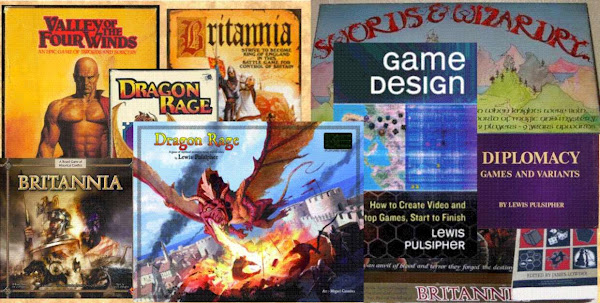Monday, October 23, 2017
Designing Stock Market Games
Buying and selling stocks is fundamentally predicated on a forecast of how well the company is going to prosper in the future. In olden days this was based on the price to earnings ratio, where you wanted to pay not more than 15 times the annual dividend you would expect to get. Nowadays some companies do not pay dividends, so it can be based on your expectation of how much the stock price is going to rise or fall, for example if you bought Microsoft stock early on you would have a lot of money per share now (the stock has split several times I think). Same for Amazon stock (though it has not split).
But that’s the long term view. There’s also a short-term view, the view of “day-traders” who want to buy a stock at a lower price than they expect it to be in a few days or weeks and sell stocks at a higher price than expected to be in a similar amount of time. Day-trading in particular is susceptible to good or bad news, for example when the British voted to exit the European Union it had an immediate strong effect on the stock markets even though it was expected to take two years for them to actually withdraw.
I am strictly a long-term stock buyer and see day-trading as a form of gambling/insanity. But it’s also a kind of game, and for some people it’s their favorite game.
A former student wants to make a tabletop game to reflect how the day-trading stock market works. We had a long discussion about the other day at the North Florida Game Designers’ Guild meeting and this is a result.
The typical defect of a stock game is that the events causing stock prices to rise or fall are randomly generated, and unforeseeable. But there are exceptions. For example, the venerable and excellent Sid Sackson game Acquire uses the growth and mergers of hotel chains, which are controlled by the players, to strongly affect the final value of stocks. Some railroad games use the success or failures of railroad companies to cause stocks to rise or fall in value. The game Imperial uses a World War I like struggle among nations to govern the rise or fall in value according to how well the nation does in the war. The players are controlling/playing the railroad part of the game or the war part of the game, but the outcome of the game depends on stock ownership of successful entities.
But this is all a long-term point of view, and my former student was interested in the short term, the day trader point of view.
A perhaps not explicit assumption here is that game players want to feel that they control what goes on in the game, that they succeed because of their own efforts. Random fluctuations in price don’t allow that. So we need something that enables players to influence the price fluctuations in the short-term rather than the long-term. What I suggested is that each player could have an identical set of cards to use to influence the price of certain stocks. Among other things there could be a reckoning for a stock where each player would play a card face down, the cards would be collected and shuffled under the table so that no one knew which card came from which player, and those cards would collectively determine what happened to the stock. The obvious thing would be to have each card simply say, company does well, or company does badly, or company stays about where it is (neutral). There could also be the occasional card that represents some news that causes a fluctuation in prices, for example an international crisis.
So if the plurality of cards is success for the company than the price will go up, and if the plurality is poor results for the company than the price would go down. From that point further price changes would depend on the players, so if they sold a lot of stock the price would go down and if they were bought a lot of stock the price would go up. It would still be the case that any stock that was bought a lot would go up in price even if the company results were not good. (We do see that in the market.) While I’ve never thought much about making a stock market game myself, I think this was the method I came up with for enabling players to affect price in the short run.
The method I’ve seen for having buying and selling prices change is a simple ladder. As players buy or sell stock they put cubes on the spots on the ladder, and when the spots are filled on a rung they move to the next higher rung (when buying) where the prices they pay are higher compared to the base price at the start of the turn, or to the next lower rung (when selling) where the price they get is lower.
This method also offers the players the opportunity to collude to drive a stock price up or down, but if the “voting” is truly secret then there can be “backstabbing” insofar as a player may make a deal to vote for a company to prosper and yet play a card of some other type.
If all negotiation is over the table, however, it will be difficult to collude in a meaningful way. But to have lots of regular secret negotiation sessions, as in the game Diplomacy, means it would be a much longer game. The alternative is to give each player a certain number of tokens that can be played to enable them to have a brief secret negotiation with another willing player. The very fact that the two players are talking together can help make the other players paranoid, if nothing else, two or three minutes of talking ought to be enough to allow for collusion or other deals. When the player runs out of negotiation tokens then the only way they can have a secret negotiation of’s of someone else plays a token in order to talk to them.
I like this so much that I even thought of doing such a game myself for about five seconds, but I have so many other relatively new games with good prospects that I’ll have to put it aside.
Subscribe to:
Posts (Atom)










